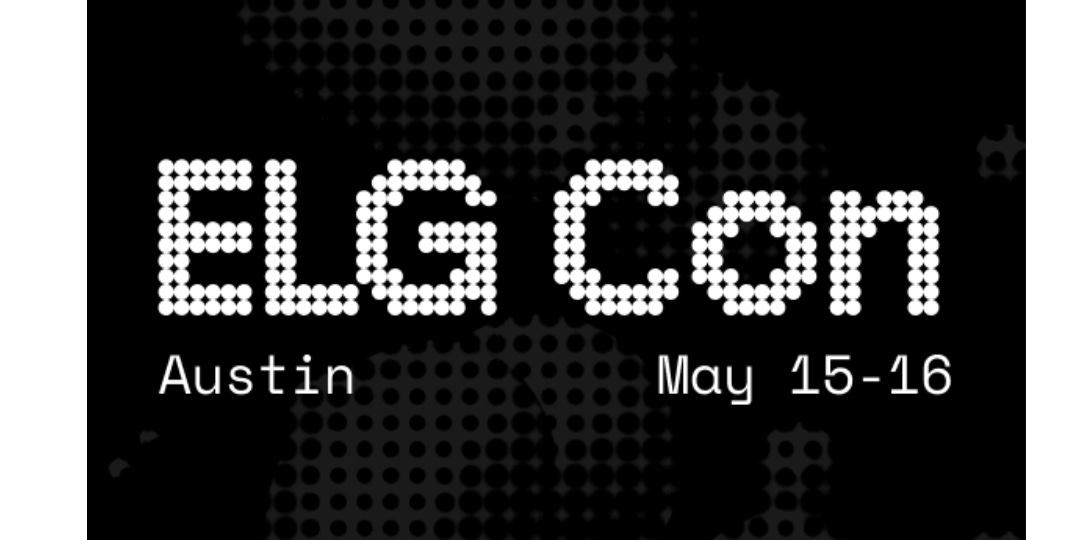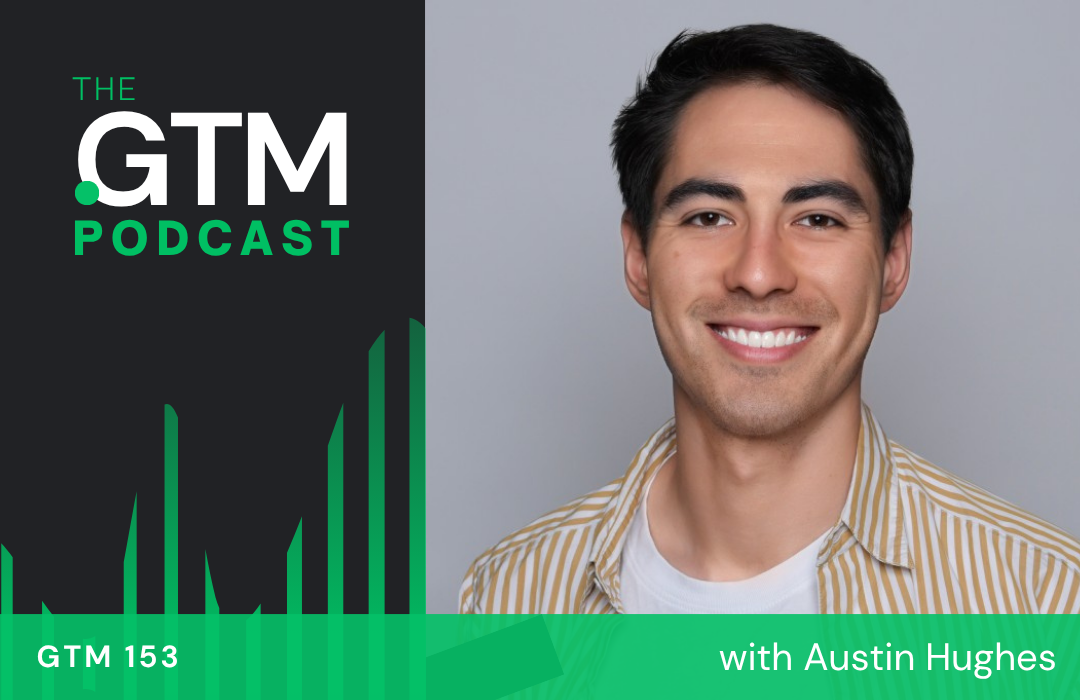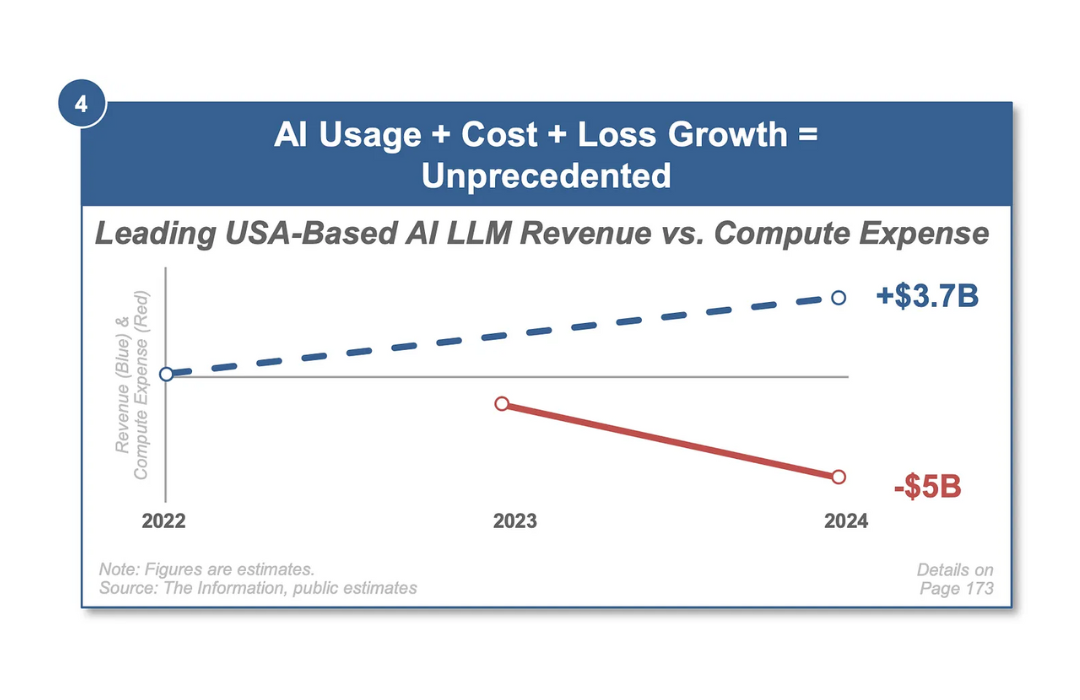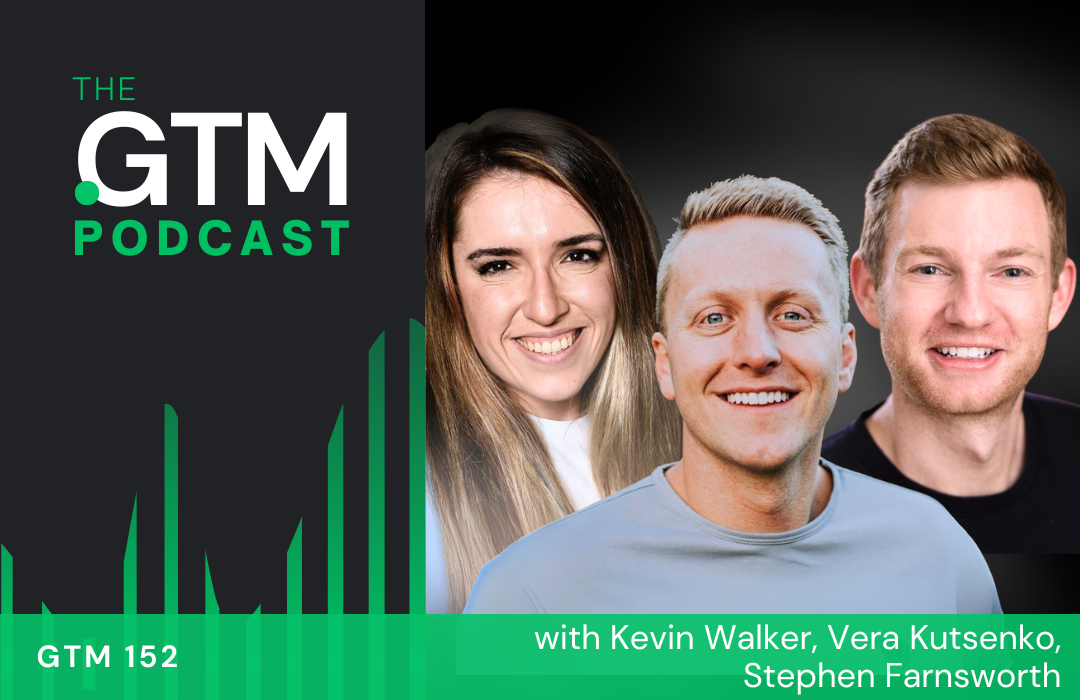The Secrets to Picking Winners

Hello and welcome to The GTM Newsletter – read by over 50,000 revenue professionals weekly to scale their companies and careers. GTMnow is the media extension of GTMfund – sharing insight on go-to-market from working with hundreds of portfolio companies backed by over 350+ of the best in the game executive operators who have been there, done that at the world’s fastest growing SaaS companies.
This week’s newsletter is brought to you by The ELG Conference.
Some individuals aspire to achieve one successful exit in their career, which is a remarkable feat. Yet, there are others who manage to secure multiple successful exits, seemingly with the knack for identifying the next big success story.
Imagine the advantage for go-to-market leaders if there was a way to definitively predict which startups would evolve into unicorns. Unfortunately, such certainty remains elusive.
However, by delving into the thought processes of those who have consistently made successful decisions, we can come as close as possible to understanding the secrets behind their success.
In today’s newsletter, we’re pulling back the curtain. Executives who have celebrated multiple successful exits share insights into their decision-making processes.
Let’s get into it 👇
The Secret to Successful SaaS Exits
Thanks to our contributors, all of whom have helped multiple companies successfully exit:
- Sean Marshall (3+ successful exits) – currently Managing Partner and Board Member.
- Holly Chen (2+ successful exits) – currently interim CMO and Growth Advisor.
- Katrina Wong (6 successful exits) – currently the Divisional CMO and VP of Marketing.
What’s “the secret” to picking winners?
People
Of all important factors identified – people matter most. Over-indexing on the team (founders, executives, investors) is a common theme amongst those with multiple successful exits.
While some is gut and intuition, there are factors to consider that help with the evaluation process:
- Is it a great team? The team itself should be A+ players from other hyper-growth companies at similar stages and they should be backed by a Tier 1 VC.
- What is their decision-making process like? How they evaluate options and come to conclusions is telling of how the business will progress, as growth is ultimately a series of decisions being made (paired with the ability to execute on those decisions).
- Are they intentional with creating a culture and is being operational front and centre? While decision-making process itself is important, the ability to execute and operationalize those decisions is paramount. A step further is that this is not occurring in isolation and that they’re able to actually pull it through to the rest of the company.
- Is the founder a good story-teller? It’s an important and underrated skill in building a company, especially in the early days. It helps both internally (hiring great employees, motivating existing employees) and externally (winning deals, raising VC money, etc). Great founders can articulate how the world is changing and how their products are key to helping organizations adapt to these new realities. They can talk vision all day, but can very easily zoom in and get specific when needed.
- Personal personality? Simply put, would you enjoy working with them. For example, are they down-to-earth and a reasonable people to work with.
Product
Of course, product is a massive factor in picking winners. These are core indicators of a “winning” product:
- It’s a need-to-have for customers. The product brings a step-function change to the market, rather than a slight improvement, and has loyal, passionate users to prove it.
- It addresses a large market. SaaS products are seen as valuable if they solve problems for a large market, and ideally, have a network effect, so that the value increases as users increase.
- It has defensible moats. Identifying the competitive edge or barriers to entry of a product can set companies up for longevity in a crowded market.
- It’s designed with users in mind. A successful product team continually listens to user feedback to improve the user experience and evolve the product.
Numbers
This can be reflective of both people and product. How do people think about numbers and what are the product metrics.
- People numbers. No, this isn’t headcount. It relates to founders, leadership, and investors and their understanding of numbers in order to know how to build a real company. Understanding the mechanics of the business, customers, and the competitive environment is paramount, especially in this new non-ZIRP world.
- Sean Marshall reflects on Klaviyo: “I love it when founders are intensely focused on building a self-sustaining business – one that can fund it’s growth through it’s own profits if needed, while having a contingency plan that involves raising outside capital. Klaviyo is a great example of this. When I interviewed with AB (Andrew Bialecki – CEO) 6 years ago to run sales there, he was crystal clear – we’re profitable now, and we intend to maintain this capital efficiency for years to come. Control was key. He wanted Klaviyo to own its destiny and build an enduring company. This immediately got me fired up. He looked at fundraising as a potential option, not a goal (unlike most founders!). One that we could take if we wanted to (which we did..). We raised money on our terms, which is the reason the company experienced minimal dilution along the way to IPO. This will always stick with me and impact how I evaluate founders for years to come. Capital efficiency is everything – having a plan and an appreciation for this will pay dividends down the line.”
- Product metrics. Depending on the stage of company this can vary, but a benchmark used by one of the executives with multiple exits is:
- High NRR (net revenue retention): >130% for growth-stage PLP companies.
- High growth rate over the last two years: >100% (this varies based on the stage of the company).
- Low logo churn of <5%.
Commonalities between companies with successful exits
Understanding commonalities is helpful for emulating success.
Understanding the importance of hiring the best people
As previously identified, people are of the uttermost importance. It’s a simple equation:
- Hire the best possible talent.
- Never lower your standards bar.
The ability to execute
The third step to the above under people would be:
- Empower them to execute.
With the best people in place, executional excellence is the standard.
How a team operates day-to-day is ultimately what compounds to create outcomes. For example: what are the cadences and how are results measured.
As simple as it sounds, companies that can set a plan and then go execute that plan will put themselves in a much better position to win.
Focus, focus, focus
Focus is a superpower behind the ability to execute.
One way this can manifest is going incredibly deep on a set of problems for a specific set of customers. Not getting distracted by all the other prospects that could become customers “if we just built these 1 or 2 things…”.
Focus applies to how the business is run, how people are held accountable, how product is built, and so forth.
The best companies ruthlessly prioritize their monthly, quarterly and annual goals and create a culture of accountability across the organization.
Move faster, look deeper
With that focus in place, always having the urge to move faster is a commonality.
Can cadences be built more frequently? Often times speed is one of your biggest competitive advantages, so how can you push to expedite cadence cycles and get to feedback / outcomes quicker.
The compliment to speed is depth. The best companies look at their business in a greater detail than you imagine.
Embrace experimentation
Develop a culture of learning and experimentation. Prioritize speed and learning across all organization functions. Celebrate this, talk about this, and make it core to how the company operates. This was a consistent theme across all of the most successful companies.
In order to do this, it requires getting really good at forming an opinion, quickly executing on an idea – whether it be a feature, piece of content, sales tactic, or something else – and creating learning loops where teams can quickly learn / iterate / execute / repeat.
💚 Sponsor love: The ELG Conference.
The smartest companies are embracing Ecosystem-Led Growth, or ELG.
Join us at the gorgeous Proper Hotel in Austin on May 15-16 and hear how the top SaaS companies are leveraging partner ecosystems in their GTM motions aka Ecosystem-Led Growth. Early-bird tickets expire next week.
What you’ll get at ELG Con:
- Case studies from companies like Data, Cloudera, and more.
- A chance to tour (and maybe even race on?) Austin’s F1 track.
- Candid, off-the-record conversations — no recordings here.
- A highly curated group of 200 GTM leaders, 85% director level and above across Sales, Marketing, and Partnerships.
Claim your tickets today, including a limited number of special two-for-the-price-of-one tickets.
👂 More for your eardrums:
Katrina Wong is the Divisional CMO / VP Marketing at Twilio Segment. She has a proven track record for launching products in new markets and helping companies move up to the Enterprise. She has also created award-winning integrated campaigns with data storytelling. Prior to Twilio Segment, Katrina worked at Zuora, Salesforce and SAP. She started her career as a management consultant for PricewaterhouseCoopers. With over 15 years of marketing experience, Katrina is passionate about helping companies through stages of substantial growth including helping 6 companies exit successfully – from pre to post IPO as well as notable acquisitions.
Listen wherever you get your podcasts by searching “The GTM Podcast.”
👀 More for your eyeballs:
An interesting read on why AI is not great at spelling. For all the advancements we’ve seen in AI, it still can’t spell very well. If you ask text-to-image generators like DALL-E to create a menu for a restaurant, you might spot some appetizing items like “taao,” “burto” and “enchida” amid a sea of other gibberish.
Splunk is now part of Cisco. Their combination will provide unparalleled visibility and insights across an organization’s entire digital footprint, fueled by comprehensive security, observability, and networking solutions.
🚀 Start-ups to watch:
Keyplay: LinkedIn Sales Insights is shutting down. Keyplay offers an alternative for market and account insights. In order to make the transition smooth, they have added: (a) ICP model with lookalikes and signals; (b) Organization and personal insights at the account level for specific functions; and (c) CRM integration. Check out market and account insights on their website.
Nira: There’s pressure to use AI to make employees more productive, but it comes at a cost and with some real tangible risks of information leaks. Nira wrote a guide to help educate leaders of organizations about the risks associated with deploying AI work assistants.
Vanta: Named to Fast Company’s list of the World’s Most Innovative Companies of 2024. Vanta ranked #1 on its Most Innovative Companies in Security list and #35 on its overall Most Innovative Companies lineup.
🔥 Hottest GTM jobs of the week:
- Demand Generation Manager at Statusphere (Remote – US)
- Revenue Accountant at Gorgias (NYC)
- Field Enablement Manager, Onboarding Programs at Atlan (Remote – US)
- Marketing Lead at Wynter (Austin, TX)
- Onboarding Partner Manager at Gorgias (San Francisco, CA)
See more top GTM jobs on the GTMfund Job Board.
🗓️ GTM industry events
Go-to-market events you won’t want to miss:
- March 28-29: SaaS Open (Austin, TX)
- April 9-10: Spryng (Austin, TX)
- April 17: Goldenhour (NYC or Online)
- April 18: CMO Summit (NYC, NY)
GTMnow & GTMfund meet ups at Spryng, Goldenhour and CMO Summit. Reach out to Sophie Buonassisi on our team if you’ll be there.
◼️ GTMfund corner
We just spent last week in Austin with some of the community and partners at SXSW. The buzz of energy in the room at GTMfund dinners will never cease to humble and amaze me.
We host private executive dinners across North America and Europe throughout the year, bringing together 40 of our executive go-to-market operators and founders at each. Next up at the beginning of April: San Francisco and NYC.
That’s it, that’s all.
A frequently cited factor involved in picking winners is the element of luck.
However, I’d like to challenge and reframe this. It’s true that being in the right place at the right time can seem like a stroke of fortune, but it’s also about setting the stage for these fortunate occurrences.
I think that you create opportunities for ‘luck’ to occur through the groundwork you lay and through proactive efforts. Deliberate and consistent actions craft a landscape where ‘luck’ can flourish.
Create the conditions for luck to find you.
Barker ✌️







